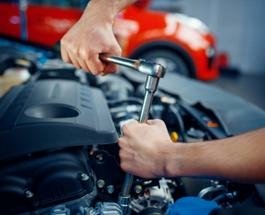How To Check Your Car's Service History

Car advertisements often state the level of service history a vehicle has, as vehicles with a good service history can be more attractive to buyers. Service history is a service book and set of documents that detail the car’s maintenance over its life.
A good service history consists of a stamped service book, details of works completed and receipts. A car might look sound on the surface but it’s always a good idea to ask for service history to get a better picture of how the car has been looked after.
A lack of service history could mean the car has not been sufficiently maintained which could result in the vehicle being unreliable and costly to repair if issues occur. Regular servicing can mitigate the risk of the car becoming unsafe and helps to retain good resale value.
Some finance contracts require the vehicle to have a full service history (FSH) with services completed on time within the manufacturer’s dealership network. Always make sure to check the terms of your agreement to avoid additional charges for servicing that doesn’t comply with the contract.
What is car service history?
On face value it is difficult to know what previous works have been carried out on a car. Service history gives a more detailed view of a car’s life and shows what maintenance has been completed. Service history includes details of where servicing took place, what level of service was completed, a stamp from the garage with the date of service and mileage of the car and any details of works completed. This documentation is often accompanied with receipts which can provide further details.
Every car has manufacturer recommended service schedules, either based on time or mileage. For example, Ford recommends a Fiesta is serviced every 12 months or 12,500 miles, whichever comes first. Checking whether a car has had the recommended services carried out at the correct times or mileage will indicate how reliable it should be.
What to look for in service history
As well as looking for regular servicing and repairs, there are some parts of a car that have a limited lifespan. This means they need replacing every few years or after a certain number of miles to ensure the car is in the best mechanical condition. Every car generally has an advised timespan or mileage for certain parts that need replacing. It’s a good idea to research the common parts that need replacing on the vehicle you are looking at so you can check the service history reflects this.
For example, Volkswagen recommends a new cambelt for its vehicles registered before 2010 every four years and for newer vehicles every five years. Each car has its own key milestones so researching these will provide a better idea of what maintenance a vehicle may need if the previous owner has not had these works completed within the recommended time frames.
The manufacturer’s website or owner’s manual should provide information on which parts require replacing when. If the owner’s manual is missing or the manufacturer’s website does not provide enough information, a main dealer should be able to advise the standard maintenance requirements for the vehicle.
Car service check
The first way to check a car’s service history is to look at the service book. The book usually comes with the car and contains service stamps from garages to verify works done. There are various types of service history stated in advertisements. A ‘full dealer service history’ or ‘full manufacturer service history’ means the vehicle has always been serviced by the manufacturer. It is not essential to have a vehicle with a full manufacturer history but this means the car has been looked after by specialists who are trained to work on that particular brand.
Common cars should have no issues with servicing from reputable garages. However, if you are looking for a luxury or specialist model like a hybrid or electric car it might be better to look for a car that has been serviced with the manufacturer. This ensures the car will mechanically be in manufacturer standard condition, with full records of work completed.
Online service history
If you service your vehicle through MotorEasy, all receipts and service records are automatically uploaded to your free online account area, or digital garage. The car logbook section is effectively a filing cabinet that keeps all records in one place. You can also manually upload service records and other related documentation if you completed your service elsewhere. Follow the simple upload process to take a photo of the documents (if using your mobile phone) or click to upload the files, if they’re stored on your computer.
If you completed your service elsewhere and have since lost the documents, you may be able to request a printed copy from your workshop. Main dealers should be able to confirm works completed with the vehicle’s number plate or VIN (Vehicle Identification Number). If the car has been serviced and there is no stamp in the service book, the garage can retrospectively stamp the book to complete the service book.
Lost service book for car
If a car has no service history this could be because the service book has been lost. One way of recovering some level of service history is to contact the dealership network. For example, if a Volvo has no service history, a Volvo dealership may have records for servicing that vehicle. If the car has been serviced with the manufacturer then they can sell you a service book and stamp it according to their records.
If the dealership has no record of serving the vehicle, it may have been serviced at a local garage. Whilst this could be more difficult to work out where it was serviced, looking up the MOT history and locations may give an indication. A local garage may be able to confirm they serviced the vehicle and provide details of work completed.
As a vehicle owner, if you lose your service history it’s a good idea to get a new service book and get the garages who have previously serviced the vehicle to stamp a new book. However, if you are looking to buy a used vehicle that doesn’t have service history and you are unable to find any records then we advise looking for another car with a more comprehensive history.
Whilst it can be tempting to buy a car that has everything apart from service history, it’s likely to cost more in the long run if there are maintenance issues that have not been addressed. A car without sufficient service history showing key milestone work and regular servicing can result in premature mechanical wear and tear and ultimately end up being expensive to resolve unaddressed maintenance.
Making FSH easy
As mentioned, if you purchase a service or service plan through MotorEasy, we will automatically upload all receipts and service checks into the car logbook section of your online account. These records provide a detailed list of all the checks undertaken, as well as measurements for tyre tread depth and brake pad and disc wear. The latter all providing an indication on when you’ll to need to replace tyres and brake components.
Our services adhere to all manufacturer required checks and use original manufacturer or equivalent recommended parts, fluids and oils. In most cases we can also secure significant trade discounts on servicing, passing on savings up to 40% cheaper than main dealers.
Savings are even greater if you purchase a two or three-year service plan. Service plans enable you to budget the cost of motoring, paying for future services through easy monthly instalments that can include the cost of an MOT, if needed. As well as being cheaper than purchasing individual services, they also lock-in the cost of future work at today’s prices.
Get a quote on a MotorEasy Service or Service Plan
The best second hand cars to buy now







